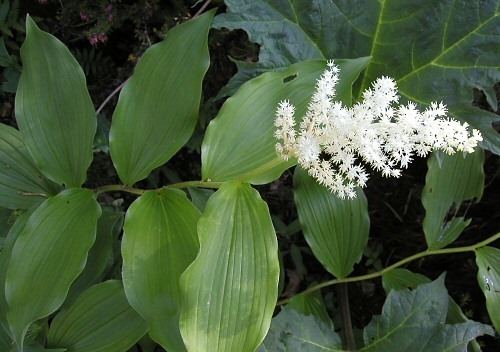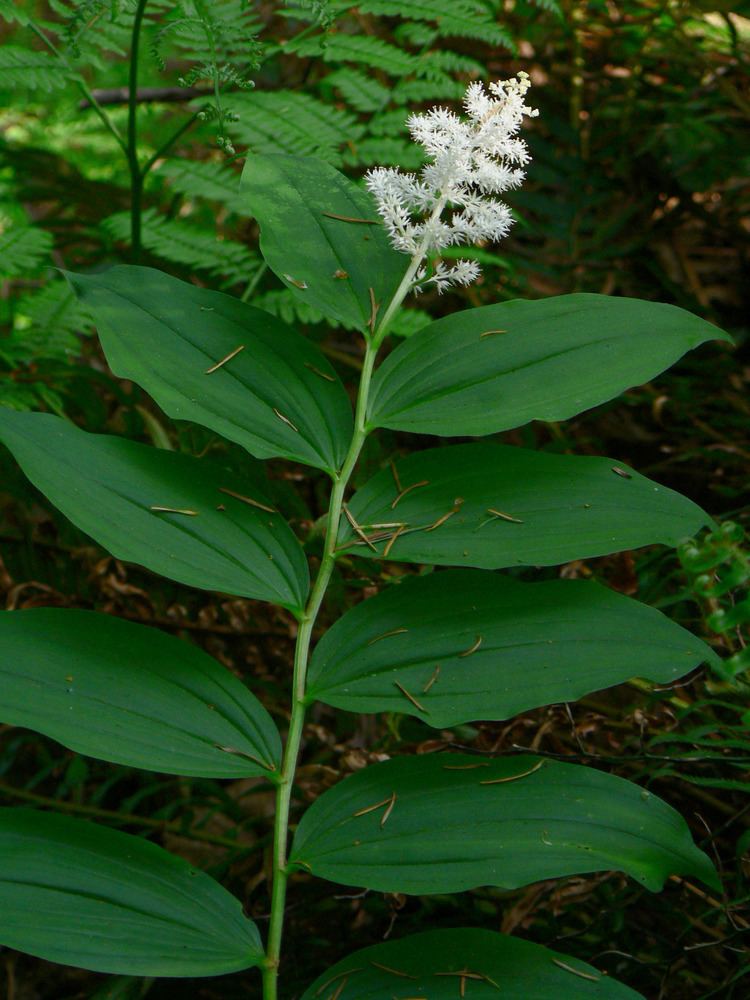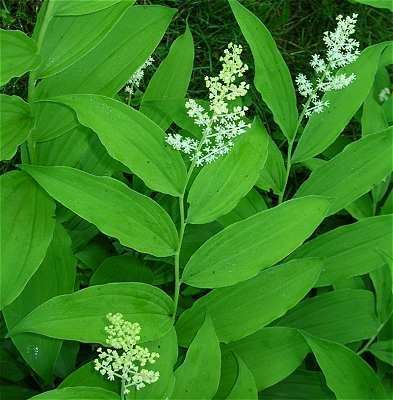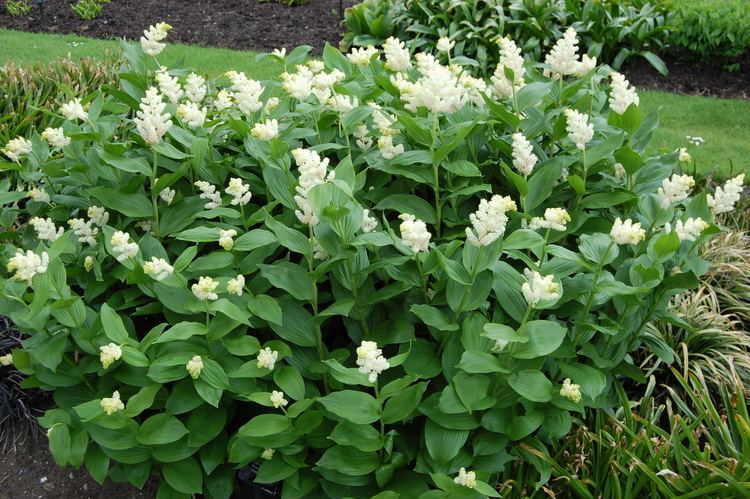Clade Monocots Rank Species | Clade Angiosperms Higher classification Maianthemum | |
 | ||
Similar Maianthemum, Solomon's seal, Maianthemum stellatum, Uvularia, Polygonatum biflorum | ||
Plant portrait false solomon s seal maianthemum racemosum
Maianthemum racemosum (treacleberry, feathery false lily of the valley, false Solomon's seal, Solomon's plume or false spikenard; syn. Smilacina racemosa, Vagnera racemosa) is a species of flowering plant native to North America. It is a common, widespread plant known from every US state except Hawaii, and from every Canadian province and territory except Nunavut, as well as from Mexico.
Contents
- Plant portrait false solomon s seal maianthemum racemosum
- False solomons seal maianthemum racemosum
- Distribution
- Cultivation
- Uses and identification
- References
It is a woodland herbaceous perennial plant growing to 50–90 cm (20–35 in) tall, with alternate, oblong-lanceolate leaves 7–15 cm (2.8–5.9 in) long and 3–6 cm (1.2–2.4 in) broad. The flowers are produced on a 10–15 cm (3.9–5.9 in) panicle, each flower with six white tepals 3–6 mm (0.12–0.24 in) long blooming in late spring. The plants produce green fruits that are round and turn red in late summer.

It spreads by cylindrical rhizomes up to 0.3 m (1 ft 0 in) long.
False solomons seal maianthemum racemosum
Distribution

Maianthemum racemosum grows in habitats in North America up to elevations of 9,000 ft (2,743 m). The most robust and profuse occurrences of this plant are typically found in partial shade and deep, moist, soft soils. In the western part of North America an example typical habitat would be in a shaded ravine or riparian corridor with common understory associates of Dryopteris arguta, Trillium ovatum and Adiantum jordanii.
Cultivation

The plant, like the closely related Polygonatum (Solomon's seal), is suitable for cultivation in moist, humus-rich soil in a woodland setting or in dappled shade. It has gained the Royal Horticultural Society's Award of Garden Merit.
Uses and identification
The young shoots, while still tender and stripped of their leaves, can be simmered in water and eaten. Their delicate flavor is somewhat reminiscent of asparagus. However, they should not be collected for this purpose unless they are obviously abundant.
Although the young shoots are edible, the plant becomes too fibrous and bitter to enjoy after it completes flowering and seed setting stages. The Ojibwa Indians harvested the roots of this plant and cooked them in lye water overnight to remove the bitterness and neutralize their strong laxative qualities.
When young, Maianthemum racemosum may closely resemble members of the genus Veratrum, a highly toxic plant to which it is distantly related. Consequently, this plant should not be consumed unless identification is positive.
